Get PeakVisor App
Sign In
Search by GPS coordinates
- Latitude
- ° ' ''
- Longitude
- ° ' ''
- Units of Length

Yes
Cancel
Share ×

Scan the QR code and open PeakVisor on your phone
❤ Wishlist ×
Choose
Delete
Although Albania is a relatively small nation in size, its sheer beauty of lush green forests, coastal Mediterannean shrubland, turquoise lakes, rugged cliffs and hills, and scenic snow-capped peaks contribute to a country that appears larger than life.
Alongside a rich history in both modern times and antiquity, when Ancient Greeks, Romans, and Byzantines all at some point left their mark on the cultural and historic fabric of Albania, there is much to be explored, experienced, and learned about this undeniably unique part of the Balkans.
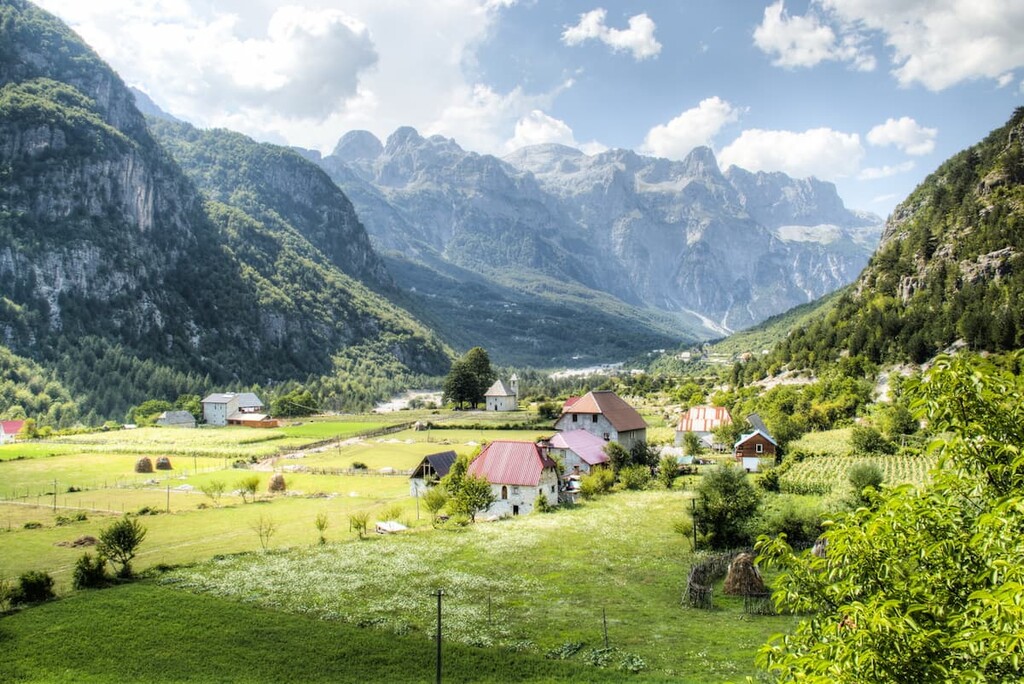
As for its mountains, though Albania only covers an area of around 28,748km2/11,100mi2, deeming it the 140th biggest country out of just under 200, its borders contain around 3,445 named peaks, owing to its location amid several Balkan mountain ranges. The tallest and most prominent of its mountains is Mount Korab, at 2,764m/9,068ft above sea level, with a prominence of 2,167m/7,110ft.
Albania is divided into 3 regions, the Northern, Central, and Southern, which are in turn divided into 12 total counties, which are in turn divided into 61 municipalities, the basic administrative division of Albania typically consisting of one or a few cities or communities of some sort.
The capital and most populous city of Albania, Tirana, is located in the most populous county of Tirana, with a population of around 900,000 people, thus boasting over 30% of the country’s population of around 2,800,000.

Albania covers a thick strip of land on the Balkan peninsula of southeastern Europe, with Greece to the south, North Macedonia to the east, Kosovo to the northeast, and Montenegro directly south. To the west is the coast, running along the Adriatic Sea in the north, and the Ionian Sea in the south, with the heel of Italy just across the water.
The country is highly mountainous, with over 3,445 named peaks in a relatively small swath of land. The acme of its landscape is Mount Korab, part of the eponymous Korab mountain range that runs through the eastern part of the country. Korab belongs to the Central Mountain Range physiographic region, alongside the Northern Mountain Range, Western Lowlands, and Southern Mountain Range.
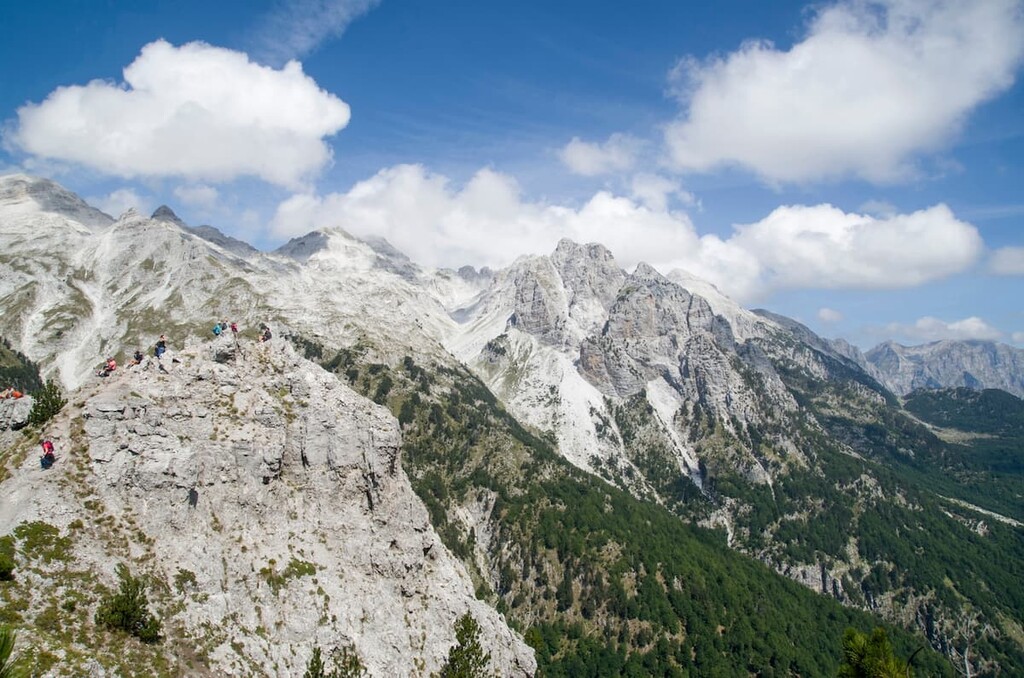
In the Northern Mountain Range are the Albanian Alps, an extension of the Dinaric Alps, within which Jezerca, the second highest peak in Albania, looms over the horizon. Among these mountains are numerous u-shaped valleys and the drainage basin of the Drin river.
In the Southern Mountain Range are the Ceraunian Mountains, a coastal range that rises out of the banks of Ionian, and of which Cika is the highest peak. The Southern Mountain Range beholds a dramatic and diverse landscape of gorges, hills, beaches, canyons, and passes, including the massive Llogara Pass. On the border between Greece and Albania are the Pindus mountains.
These mountains and hills border the Western Lowlands, flat plains comprising much of Albania’s coast. The Myzeqe plain dominates the region, with 3 main rivers running across. As the Western Lowlands stretch south past the Peninsula of Karaburun, from the Adriatic to the Ionian coast, the shore becomes less low and more rugged. The Western Lowlands also contain the Albanian Riviera, an especially fertile part of Albania.

The hydrography of Albania includes a complex river system, over 250 lakes, and many lagoons. The longest river is the Drin, with a drainage basin containing one of the biodiverse ecosystems in all of Europe. Lake Shkodër lies along the northern border with Montenegro, and is the largest lake in southern Europe; by the southwestern border is the Lake of Ohrid, one of the oldest and deepest lakes in Europe.
Albania, like its neighbors, belongs mainly to a distinct Mediterranean climate with characteristic dry summers and wet winters, but also a continental climate with 4 distinct seasons, including spring and autumn. Precipitation, while varying greatly due to elevation, is generally very heavy, especially in the north.
The great variety of elevations results in a variety of microclimates, making it difficult to generalize. The warmest parts of Albania are typically along the coasts, affected by the Mediterranean, while the interior is more affected by the aforementioned continental climate.
The coldest parts of Albania typically occur in the north, where the climate becomes virtually subarctic, exposed to frigid winters and tepid summers. Lowland winters are milder but with warmer summers, albeit with less humidity than the summers along the coasts.
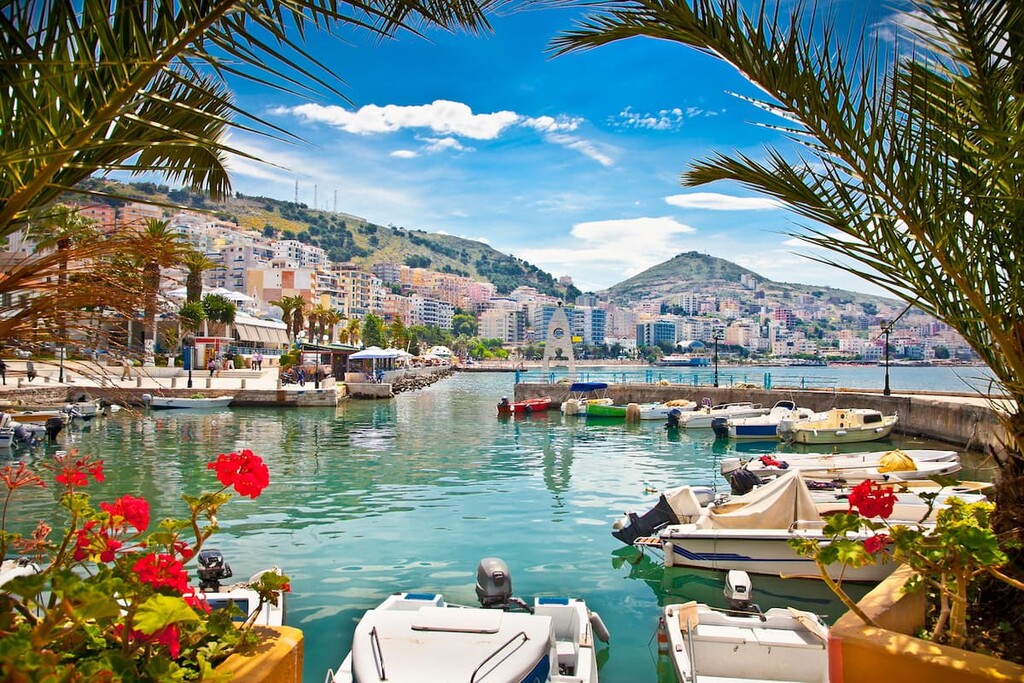
The geology of Albania is primarily defined by the presence of numerous mountain ranges. Several of these ranges are part of the greater Central Mountain Range, including that of Korab, in the northeast corner of the country, is a Paleozoic range of exposed faulted sedimentary composition, namely limestone, shale, dolomite, and sandstone, with glacial lakes tucked inside valleys between mountains.
Mount Korab itself is defined by shale and limestone, as well as blocks of gypsum from the Triassic.
Also in the Central mountain Range are the Valamara Mountains, consisting of Mesozoic and Paleozoic rocks that are likewise sedimentary, such as conglomerate, dolomite, limestone, and sand. The Skanderbeg Mountains, near the Western Lowlands, have peaks of limestone with slopes of flysch, and owe their origin to uplifting and folding activity from the Triassic to Cretaceous periods.
The Ceraunian Mountains in the south are also composed mainly of limestone, but are Triassic in age, and are cleaved by the presence of the Llogara Pass. Evidently, the basis of Albania’s mountains is highly sedimentary, as limestone and dolomite from the Mesozoic make up the Albanian Alps as well, which have also experienced Pleistocene glaciation.
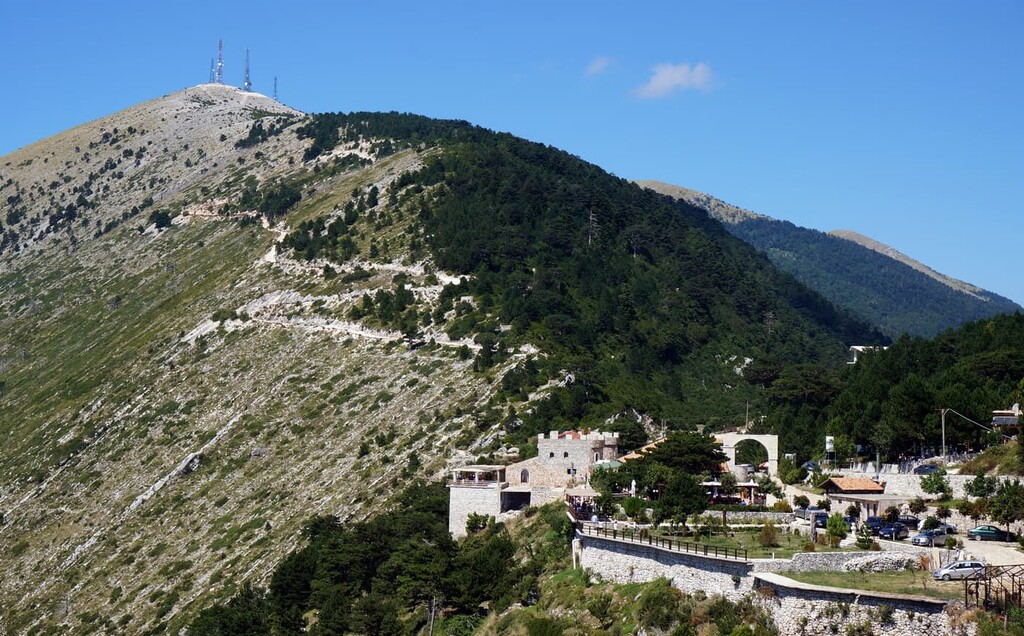
Within Albania are also several prominent canyons and gorges, like the calcium carbonate-based Canyon of Gjipe, the karst-based Grunas Canyon, and the river gorges of Skorana and Osum.
Albania’s coast consists of a mix of sedimentary alluvial deposits, sandy beaches, and wetlands, and is rich in many of the aforementioned rocks, like dolomite and limestone, alongside bituminous schists.
Albania is one of the hotspots of biodiversity in Europe, owing to the effects of the Mediterranean Sea, higher rates of precipitation, and unique and diverse geological landscapes and climates.
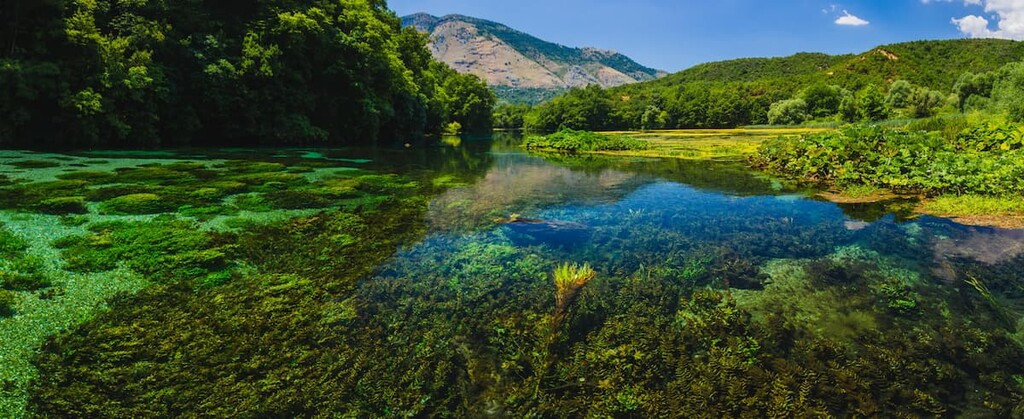
The floral biodiversity can be seen split into four main ecoregions: the Balkan, Dinaric, Pindus, and Illyrian forests. The Balkan and Dinaric forests are temperate broadleaf and mixed forests characterized by a canopy of tall trees, a sub-canopy of smaller and juvenile trees, a thick layer of shrubs, and an herbaceous layer, and are typically rather humid with a moderate temperature range.
The Balkan forests, located mainly along the northeastern borders and mountains of Albania, are home to many species of oak that comprise a large portion of the vegetation, as well as trees like the Macedonian and Bosnian pine, silver fir, European beech, and Norway spruce. At the very highest elevations, tree populations dwindle and are replaced by alpine tundra vegetation, mostly low-lying perennial grasses, herbs, and sedges.
Dinaric forests, located in the very north of Albania, have a very similar makeup of trees to the Balkan forests, as well as populations of trees like the European black pine, South European flowering ash and Oriental hornbeam.

The Pindus and Illyrian forests, however, belong to the Mediterranean forests, woodlands, and scrub biome, and occur closer to the Mediterranean sea itself, while the other two are typically further inland. Dry summers, rainy winters, and sclerophyllous vegetation adapted to retain moisture are the main hallmarks of Mediterranean forests.
Pindus forests exist mostly in the eastern and central mountainous parts of Albania, and at higher elevations, the forests support coniferous communities like the Austrian pine, Greek fir, and Bulgarian fir, as well as foetid juniper in southern Albania. At lower elevations, horse chestnuts and a variety of oaks are prominent, and on dry, rocky slopes, sclerophyllous shrubland and Palestine oaks dominate.
Along the coast of Albania are the Illyrian forests, with a similar pattern of coniferous forests at higher elevations and deciduous forests and shrubland at lower elevations. These coniferous forests contain trees like the European black pine, Norway spruce, and silver fir, while deciduous oaks populate lower zones, and maquis shrubland species like oleander, Greek strawberry, pistacia lentiscus, terebinth, and cade juniper populate the coast.

While there are some differences between the animal populations of these ecoregions, these generally aren’t strict lines, and most animals can be found gravitating throughout these various forests or restrained to particular landscapes like the coast or mountains.
Albania is home to many mammal species, including endangered carnivores, which can either be found throughout the country’s forests, or exclusive to certain areas. The red fox and brown bear appear more or less ubiquitous, though the red fox is more common, while golden jackals stay mainly along the Western Lowland coast. Eurasian lynxes, European wildcats, gray wolves, and Eurasian wolves make up the other large carnivores of the Albanian forest.
Other smaller carnivorous mammals include the Eurasian otter and European badger, while there are also many herbivores like the popular red deer, the chamois, the fallow deer, and the roe deer.
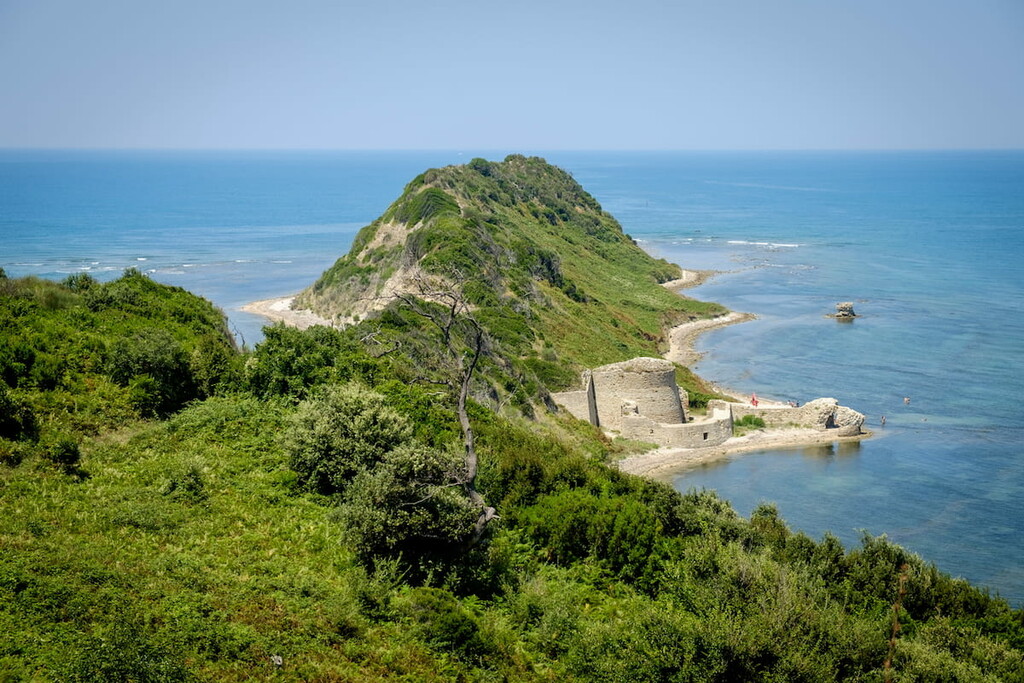
As for reptiles, Albania is considered one of the more significant locations in the Balkans for the recording and studying of reptile presence. Hermann’s tortoises are especially populous, while Loggerhead and green sea turtles often come to the beaches to nest, and lakes and ponds may see European and Balkan pond turtles. There are also many notable lizards, like the European and Balkan green lizard, blue-throated keeled lizard, and Mediterannean house gecko.
The coastal waters of Albania are also home to many extraordinary and unique animals, including the Mediterranean monk seal, common bottlenose and short-beaked common dolphin, and a notable abundance of different shark species. The coasts are also known for the presence of the Dalmatian pelican, one of the rarest pelicans in the world.
The ancient Lake Ohrid houses many endemic species, providing habitats for rare fish such as the Ohrid trout. Lake Shkodër is also of particular biodiversity interest, with highly endemic populations of carp, eel, bleak, freshwater snails, and molluscs, and rich bird habitats of seagulls, herons, pelicans, and hundreds of other species.
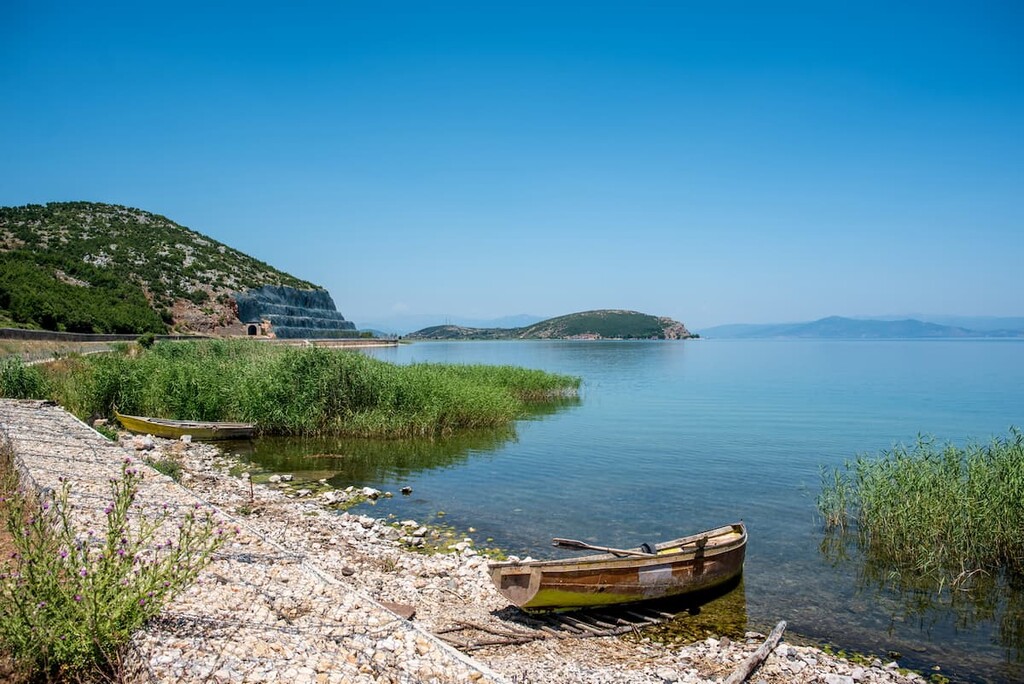
The history of Albania is, undoubtedly, rich and extensive, with various archaeological sites and findings attesting to this existence of proto-humans and, later, humans themselves for potentially dozens of thousands of years in the region.
Antiquity was marked by the presence of numerous different Indo-European peoples, including the Illyrians, the Thracians, and the Ancient Greeks, who established several colonies along the coast. The arrival of the Romans, particularly around the 3rd century BC, brought much conflict in the region, particularly between the Romans and the Illyrians. This resulted in Roman conquest, and Illyria was annexed into the empire.
In 395 AD, the Roman Empire was split and the region that would become Albania became part of the Eastern Roman Empire, otherwise known as the Byzantine Empire. While the Slavs would not play as much of a role in Albania as they did in other parts of the Balkans, there was a Slavic presence arriving in the area during the 6th and 7th centuries.

Several hundred years later, in the 1000s, the Great Schism created a religious divide between the Orthodox of the country, who mostly inhabited the south, and the Catholic, in the north. Soon after, the Principality of Arbanon, the first recorded Albanian state, was established, covering a large swath of the northern part of the country.
The foundation of the Albanian people as an ethnic group is more ambiguous, but the clearest first mention of the label “Albanian” comes from around 1080, around the time the Albanians had become Christian.
Arbanon, originally under Byzantine rule, attained temporary political independence in 1204 during a time of crisis in the empire; however, this independence was short-lived, when the Despotate of Epirus, a Greek successor state of Albania, invaded Albania in 1206. Rule of Arbanon was then followed by the Bulgarian Empire and, in 1235, the Empire of Nicaea. Serbs and Venetians likewise took control of portions of Albania around this period.
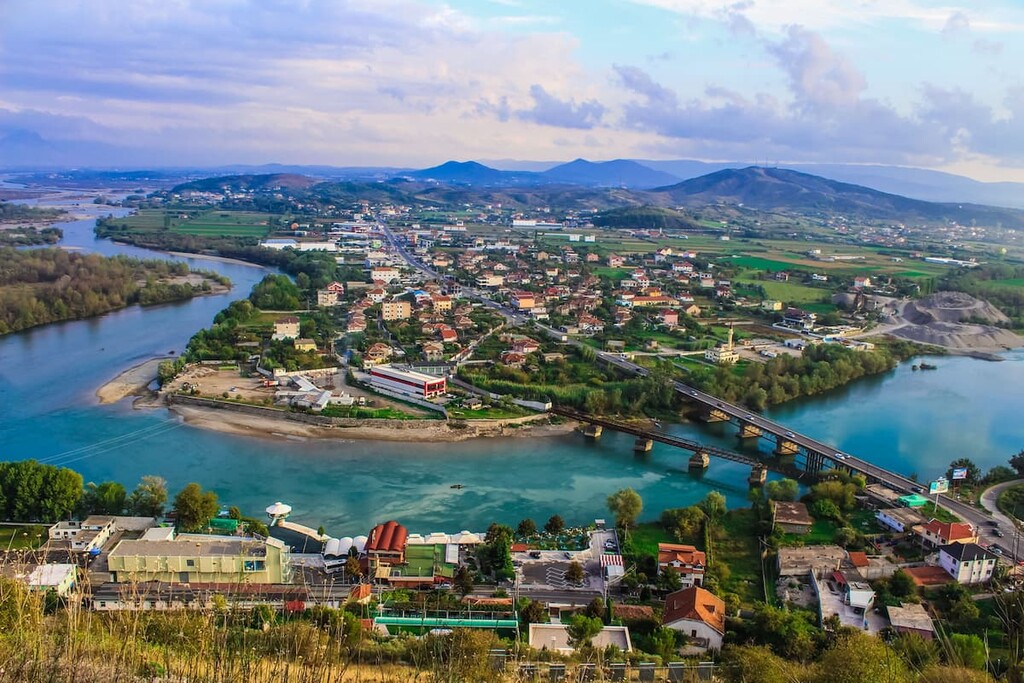
Albanian rulers were able to regain some liberties and protection under the House of Anjou in the later 1200s. It was under Anjou that the Kingdom of Albania was established, taking back land from the Despotate of Epirus. The Kingdom of Albania had a largely Catholic political structure, and saw the creation of many Catholic institutions like churches and monasteries.
However, in the 1400s, the Albanians again found themselves under the hand of a foreign empire, with the Ottomans having invaded and occupied Albania, inciting a movement of Albanians to other European states. With the Ottomans came an Islamisation process, physically seen in the mass construction of mosques, thus contributing to the religious demographics of Albania today, being over 50% Muslim.
The Albanians rebelled in several movements against the Ottomans in the 1440s, including the rebellions of Albanian noblemen Skanderbeg and George Arianiti. Nevertheless, the Ottomans retained a strong hold over the region.
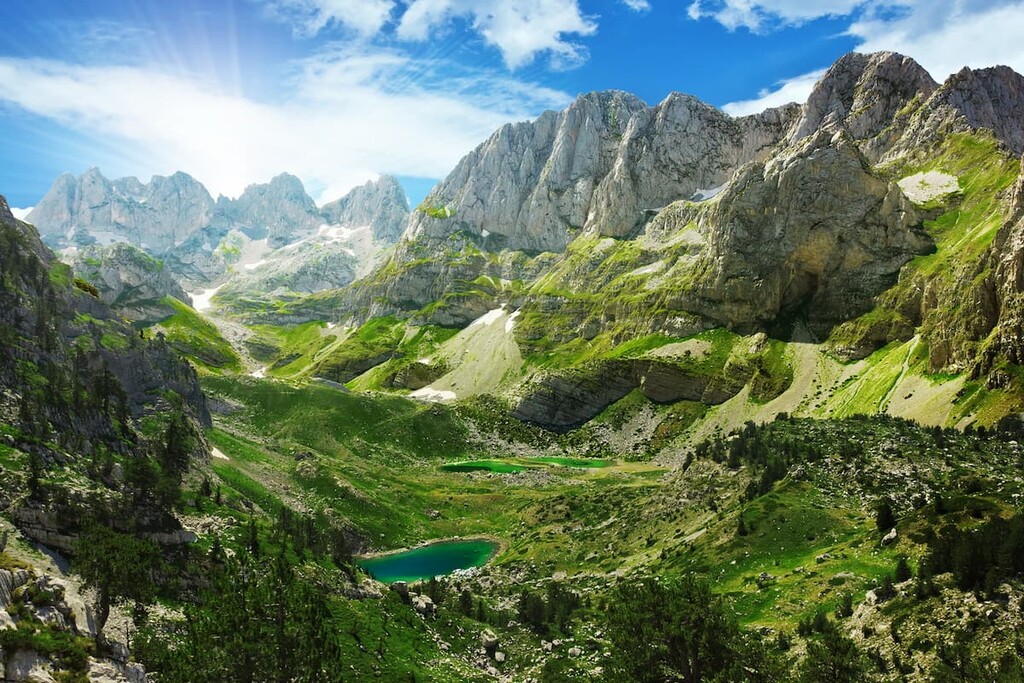
In the late 1700s and early 1800s was the Albanian Renaissance, a time of great development and flourishing of Albanian literature, art, and general culture, alongside the principles of Romanticism and the Enlightenment, providing a greater foundation for Albanian unity and consciousness.
With the decline of the Ottoman Empire in the early 1900s, the Albanians declared independence in 1912. Control, political structure, and borders would shift over time, including stints as a parliamentary republic, a protectorate of Italy, a communist satellite state of the Soviet Union, and, eventually, the constitutional republic that it is now, established in 1991.
From national parks to nature reserves to mountain treks, there are endless areas of Albania suitable for hiking its paths and experiencing its natural beauty. The ones listed have been split into the three regions of Albania, though there are certainly many more pockets of wilderness and natural beauty throughout the country than can be counted.

Theth National Park’s location in Albania, hidden among several two-thousanders, characterized by canyons and passes and massive rock faces, and run amok with rivers, waterfalls, and thick forest, deems it one of the gems of the Albanian landscape.
Popular hikes within the park include the path to the pristine Grunas Waterfall by the Grunas Canyon, the Blue Eye of Theth, and the stone baths of Vaskat. Around Theth, one can also hike the slopes of some of the mountains that create Albania’s dramatic horizon, such as Radohima and Harapit.
There is an alpine trek from Theth to Valbona Valley National Park (or vice-versa) right nearby, estimated to take between 6 and 10 hours to complete, and providing some of the most stunning views of the rugged and lush mountains of Albania.
Next to Theth is Valbona, known as another premiere destination for exploring the Albanian Alps. Stunning summits, glacial springs, rock formations, and endless swaths of forest have attracted many visitors to its extraordinary alpine environment.

There are many hiking opportunities within the park, especially up the many mountain peaks and valleys that comprise it. Paths up the mountains of Jezerca, Zla Kolata, Popluks, Rosni, Boshit, and Kollata provide phenomenal views of the dramatic twists, turns, lows, and highs of the Albanian Alps.
Diverse elevations and diverse ecosystems contribute to the wondrous environment of Lura-Dejes Mt National Park, named after the Lura mountain slopes it contains. In and alongside the Lura mountains are twelve glacial lakes, the mountains forming imposing scenes around such clear blue plains.
While the park has long been threatened by illegal logging operations, recent expansions and plans for preserving the park’s great wilderness forebode a brighter future for exploring Lura and its lakes.
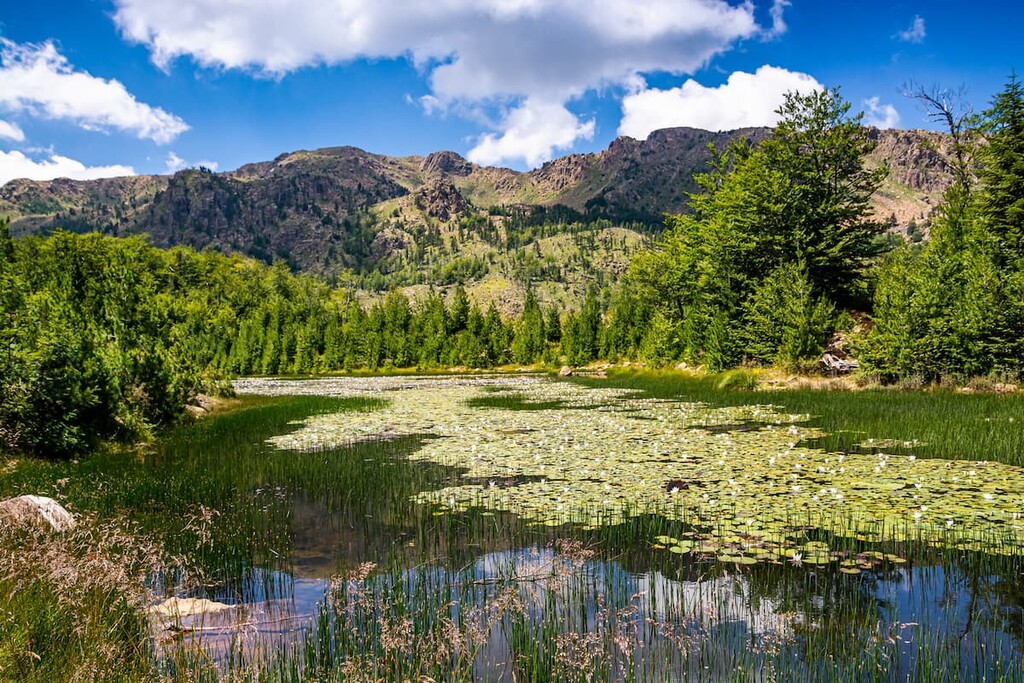
Other notable locations in Northern Albania include:
Boasting populations of some of the great endangered mammals of Europe, like the brown bear, gray wolf, and iconic balkan lynx, Shebenik-Jablannicë National Park is a grand mix of lush forest vegetation and rugged glacier-carved landscapes, including glacial lakes and smaller cirque glaciers among the mountains of Shebenik and Jablanica.
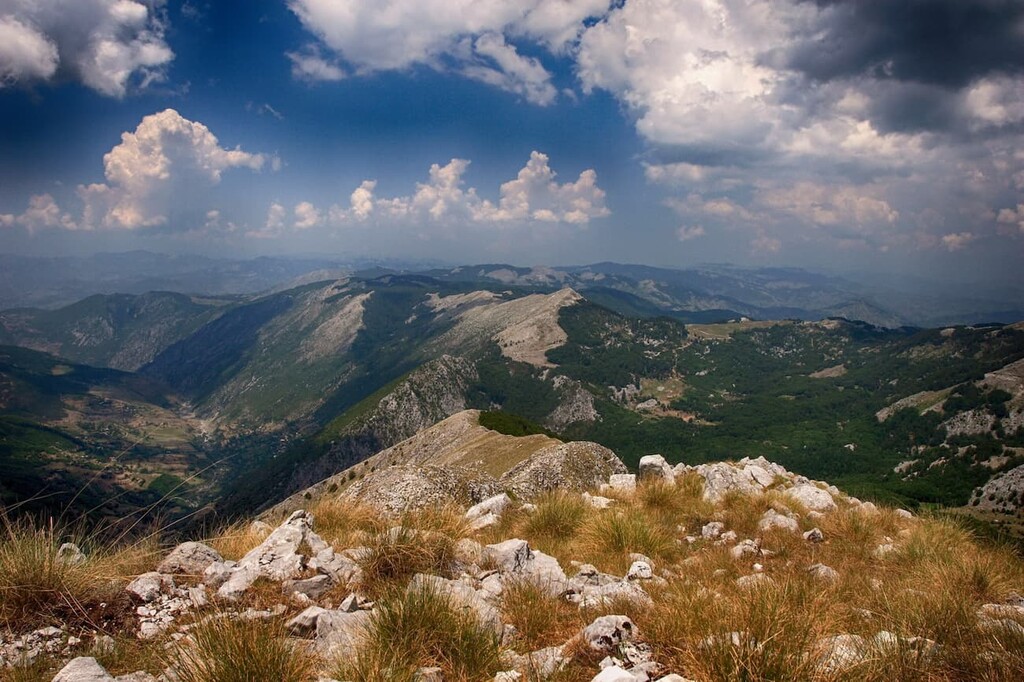
The park is home to a variety of hiking trails at a variety of difficulties, running through forests and lakes and mountains. One of the greatest hiking experiences offered is the hike up Shebenik Mountain, making for a challenging but stunning day trip to the top of the park.
Dajti Mountain National Park is perhaps the most accessible in Albania, located so close to the capital city of Tirana that one could reach it by a scenic cable car trip. The Dajti Mountain is the main hiking destination of the park, and those who climb it are treated to a panoramic view of both Tirana and the nearby mountains.
In recent years, the relatively undeveloped Shtamë Pass National Park has become more well-known for its hiking trails through forests of oak and old black pines, with scenes of mountains and lakes to attract the eye at every turn.
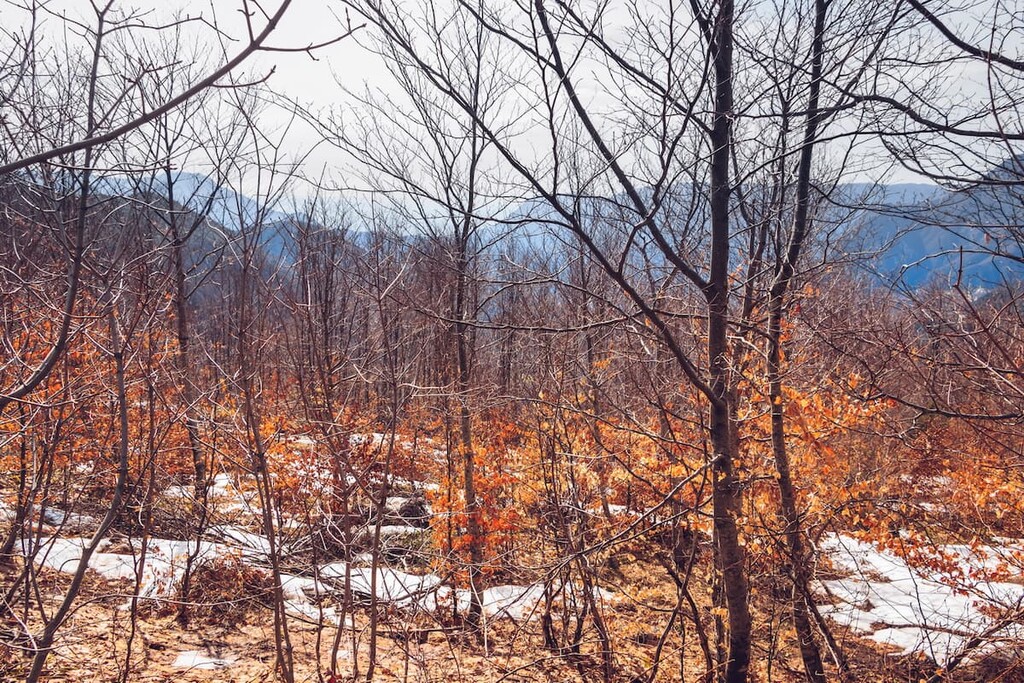
Other notable locations in Central Albania include:
Along the coast of the Peninsula of Karaburun, Karaburun-Sazan Marine National Park provides a different view of Albania outside of the mountains and lakes of inland. Limestone cliffs, massive caves, rocky shorelines, and incredibly diverse marine and terrestrial ecosystems among its bays characterize the uniquely Mediterannean experience of Karaburun.
While many of the activities at Karaburun-Sazan Marine Park are focused on the water, such as snorkeling or boating, there are nonetheless several opportunities for exploring its hills and cliffs on foot, looking out onto the sea below.
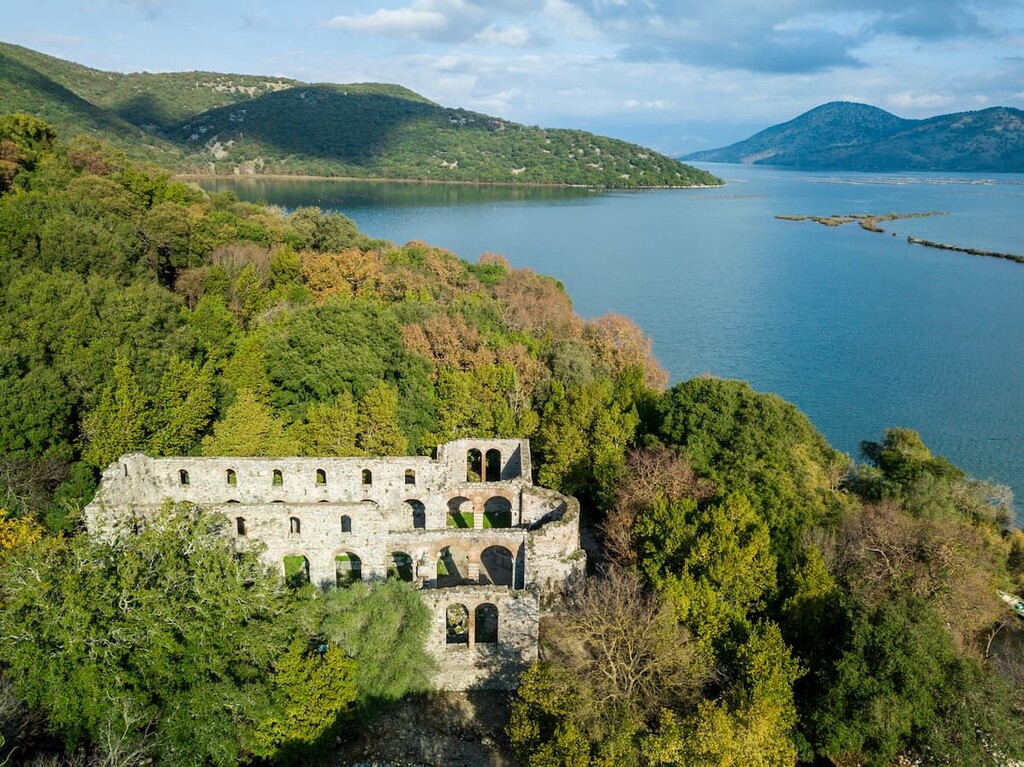
Also along the coast, albeit further south by the Strait of Corfu, are the lakes, wetlands, marshes, islands, and archaeological wonders of Butrint National Park. Though the focus of Butrint is more concentrated on the wealth of historical landmarks, with ancient theatres, temples, altars, and aqueducts at every corner, there are still trails like the Cape of Stillo that showcase a combination of the historical and natural beauty that define Butrint.
Llogara National Park, south of the Peninsula of Karaburun, stretches from the Albanian Riviera and Ionian Sea to the mountain forests to the alpine peaks of the Ceraunian Mountains. It takes its name from the Llogara Pass, a mountain pass through the Ceraunians with brilliant sights.
Hiking is a very popular activity at Llogara National Park, with plenty of paths through plenty of scenes. The hike up Mount Cika, the highest point of the Ceraunian Mountains, is of particular note, with breathtaking viewpoints of the surrounding area along the way.
On the border with Greece and North Macedonia is Prespa National Park, given its character by the presence of the Prespa Lakes and the wetlands, salt marshes, meadows, reed beds, forests, and mountains that surround it. Prespa National Park is a place of both great natural and historic significance, having been the location of human settlement for thousands and thousands of years, from the people of the Neolithic to the Greeks and Byzantines.
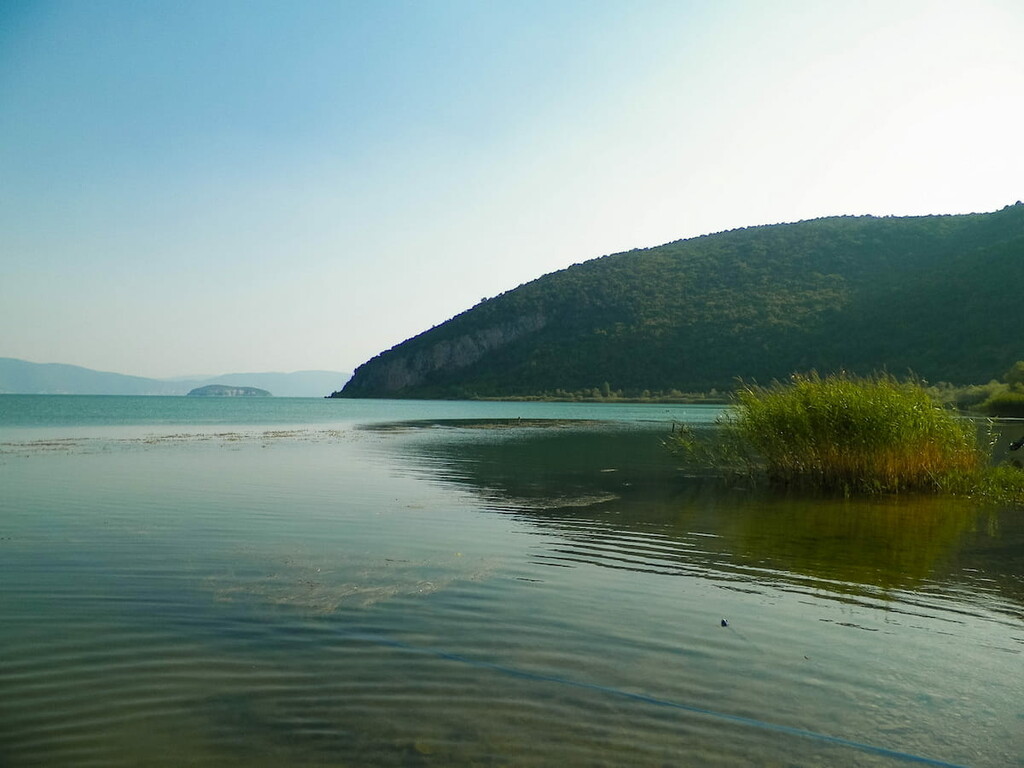
The hiking trails of Prespa are well defined and range from low difficulty, like the 2-hour-long Zagradec-Lesser Prespa trail, to moderate and high difficulty, like the 9.5-hour-long Greater Gorica-Alarup trail, leading to the highest point in the entire park.
Divjaka-Karavasta National Park rests on the coast of the Myzeqe Plain, boasting pristine examples of the Mediterannean wetlands, swamps, estuaries, and forests that run up and down Albania’s coast. Rare birds like the dalmatian pelican are among hundreds to inhabit or visit the diverse ecosystems of Divjaka-Karavasta, alongside mammals like the rare golden jackal and roe deer.
Hiking in the park is extensive, with tours and paths available to see and explore the famous bird watching spot of the Karavasta Lagoon, ancient and Medieval castles and towers, and beautiful islands, canals, and rivers.
Up atop the Tomorr massif, Tomorr National Park is abundant in alpine and montane flora and fauna, a microcosm of what the mountains of southern Albania have to offer. The massif itself holds great significance as a pilgrimage site for Albanian Christians and Bektashis, and its grand crests are accompanied by other geological wonders like the Osum canyon and its river.

New hiking trails have been established within the past few years, expanding the amount of options for exploring Tomorr. Tomorr Mountain itself is a notable destination for hikers, known for its gorgeous scenery.
Fir of Hotova-Dangelli National Park is the largest national park of Albania, and thus has no shortage of natural beauty, biodiversity, and natural monuments. So many aspects that characterize the Albanian landscape, from valleys to mountains to canyons to rivers to forests to caves and thermal springs, can be found within the bounds of Fir of Hotova-Dangelli.
Owing to its size, it has many hiking trails and excursions, leading to old Church ruins, thick forests, mountain peaks or mountain views, or waterfalls.
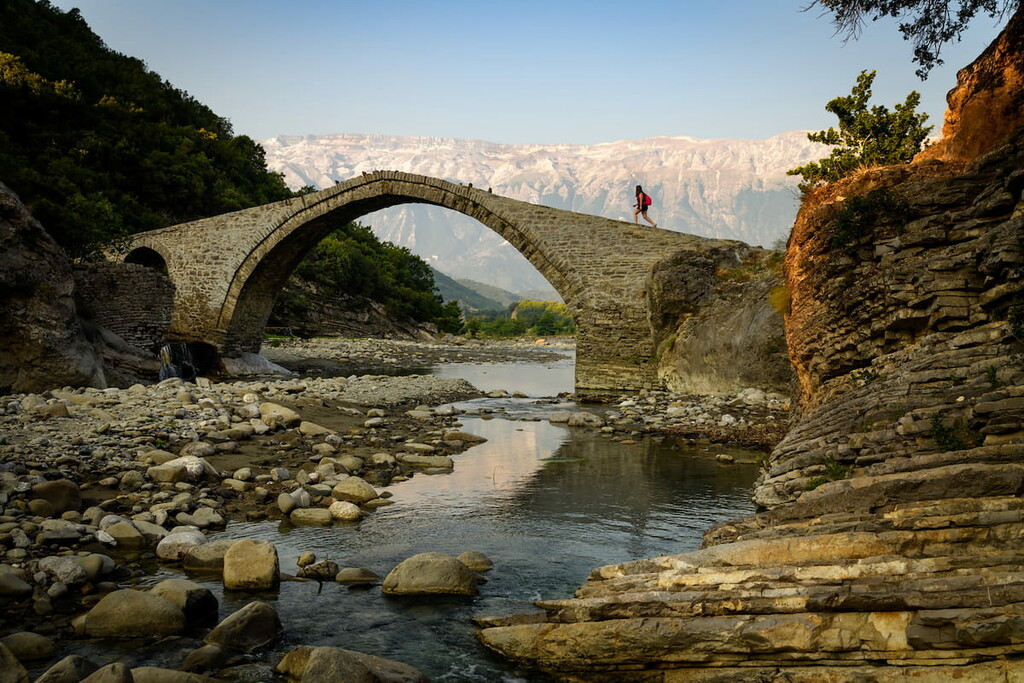
Rock formations, forests, and lakes make up the Fir of Drenova National Park. The park functions as a natural corridor for large mammals like bears, wolves, and deers, and there are several hiking trails wound throughout its hills.
Other notable locations in Southern Albania include:
The cities of Albania often present a remarkable architectural and cultural history, having been the sites of much settlement, change, and innovation for so long. Communist-era blocks coexist with ancient castles and Neo-Renaissance palaces, Ottoman mosques alongside Orthodox churches. While Tirana and Durrës are two of the largest and most notable, there is certainly no shortage of fascinating cities, towns, and villages to be seen throughout the country.
The capital city and largest city of Albania, Tirana epitomizes the rich history and culture of Albania at large. The Grand Park and the Rinia Park provide seas of green amid a mix of modernist and Neo-Renaissance and traditional European architecture.
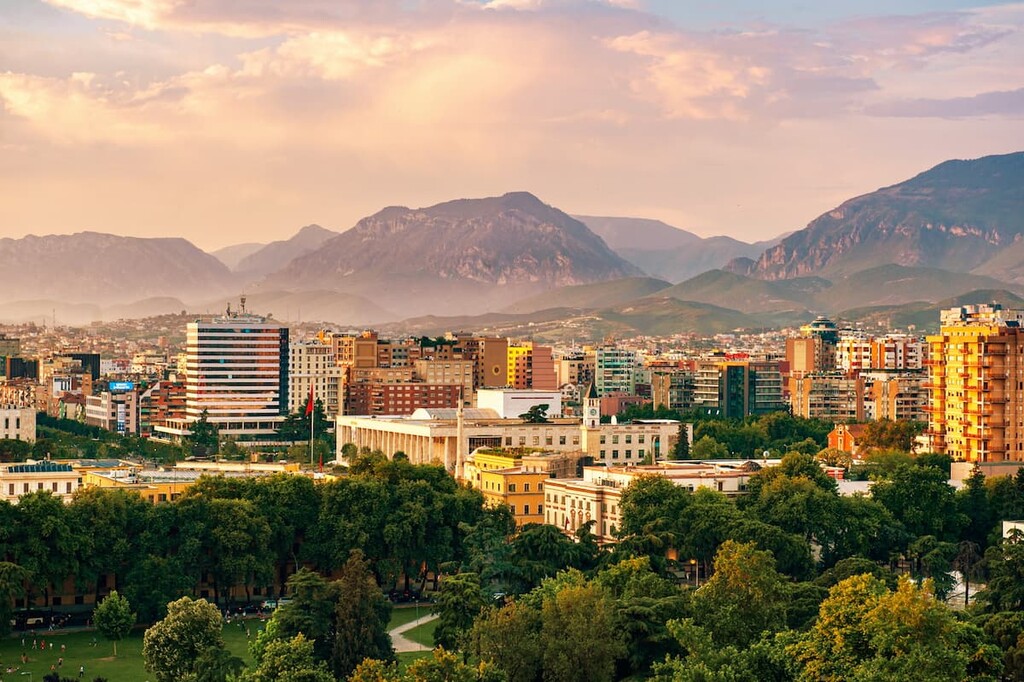
All this is alongside lively city centers like Taivani, Dëshmorët e Kombit, Blloku, Skanderbeg, and Mother Teresa, where opportunities to enjoy the markets, nightlife, and gastronomy of Tirana abound. And with several major museums dealing in history, art, and archaeology, and numerous historic/cultural institutions like the National Library, Presidential Palace, there are just as many opportunities to experience Tirana’s history firsthand.
Other notable attractions in and around Tirana, showcasing the diversity of cultures that have and still do inhabit the city, include Petrelë Castle, Resurrection Cathedral, Et’hem Bey Mosque, the Clock Tower, and nearby Mount Dajti.
Tirana can be accessed by flight through Nënë Tereza International Airport, the main gateway to Albania as a whole. By land, the city is a terminus for Albania’s extensive road system, connected to the rest of Albania and major sites in nearby countries; other major Albanian cities can also be accessed via Albani’s railways, and buses and trams can be used to travel in and around Tirana.
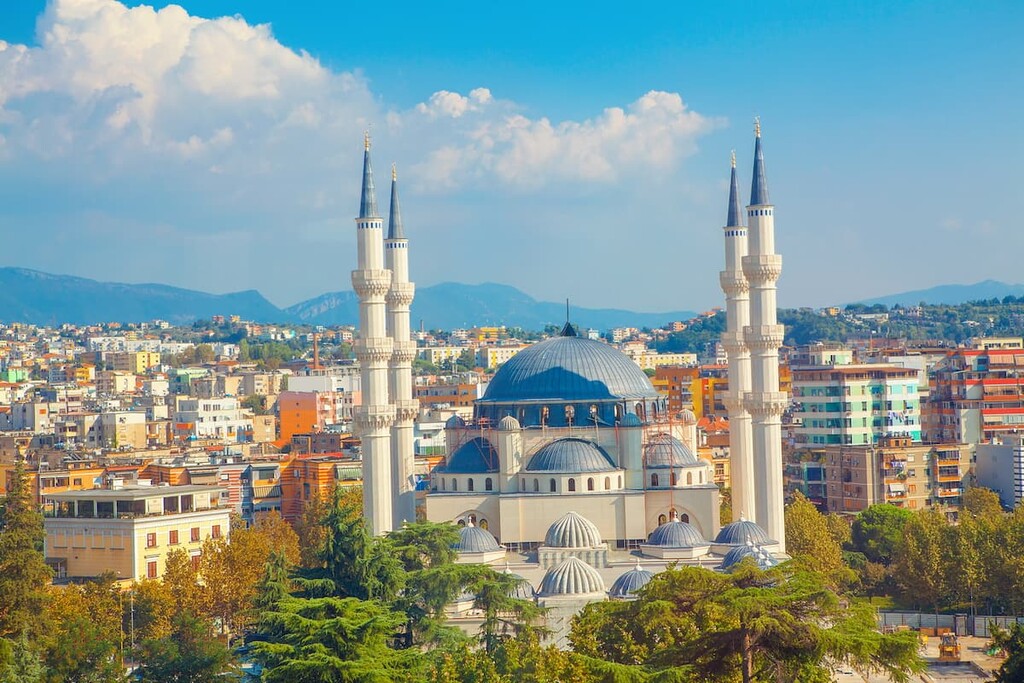
The second most populous city of Albania, the coastal city of Durrës likewise offers much to see and do, especially along its scenic promenades and beaches, and among its scenic blend of Classical, Italian, Illyrian, and modernist-inspired architecture.
The Durrës Archaeological Museum, Roman amphitheatre, Byzantine walls and castle, and the Royal Villa of Durrës contribute to creating a city that seems to burst with history at every corner, remnants of civilizations from one or two thousand years ago still alive and well among the hustle and bustle of the modern city.
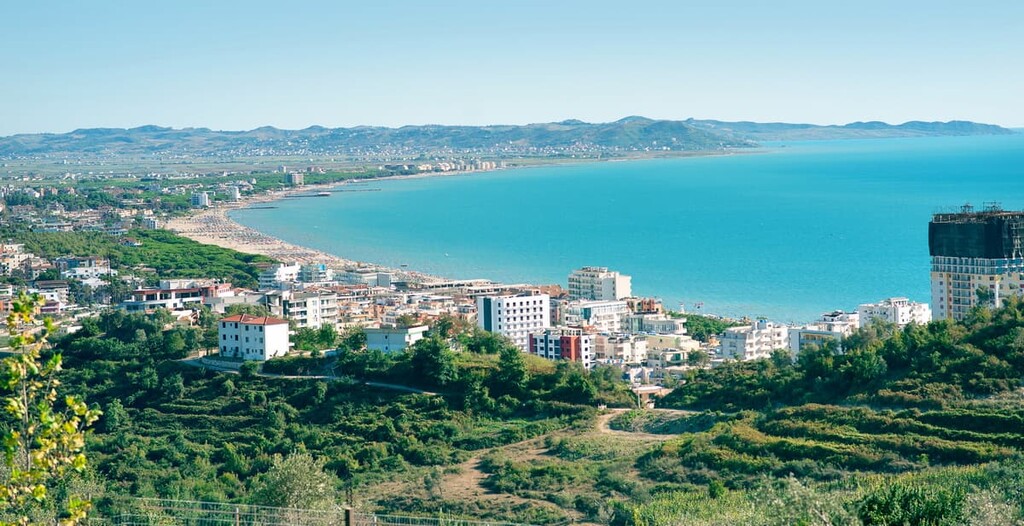
Durrës, like Tirana and the other major cities of Albania, connects to the rest of the country through its road and rail systems, and it is more uniquely Durrës is served by fairly popular passenger ferries as well.
Explore Albania with the PeakVisor 3D Map and identify its summits.








